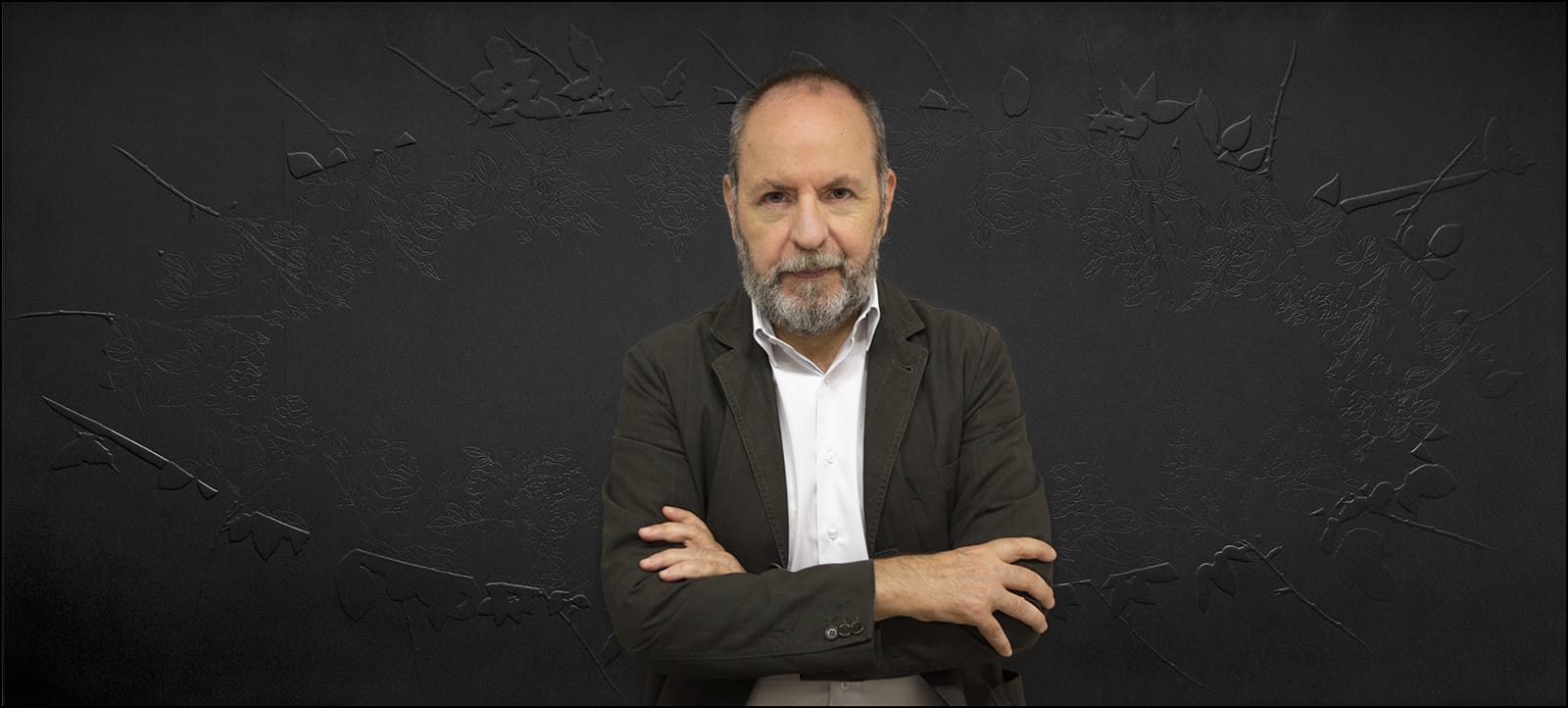

Biografia
Giuseppe Salvatori nasce a Roma nel 1955. Esponente del ritorno alla pittura figurativa alla fine degli anni settanta, nel 1980 partecipa alle due mostre pubbliche ricognitive sulle ultime tendenze dell’Arte italiana contemporanea: a Bologna, alla Galleria Comunale d’Arte Moderna, con i Nuovi-Nuovi di R. Barilli e a Ferrara, alla Loggetta Lombardesca, con Italiana: la nuova immagine di A. B. Oliva. La sua ricerca espressiva, attraverso l’uso del pastello su tela, nasce da una appassionata rivisitazione dell’Arte italiana del primo quarantennio del novecento, riagganciandosi in special modo alla Metafisica. Salvatori lavora a quadri di architettura, di natura morta e di paesaggio, una poetica fondata sull’opposizione natura-cultura e che si esplica nello stretto rapporto con il mondo letterario di cui condivide progetti e suggestioni. Tra il 1987 e il 1988 passa alla tecnica della tempera, che gli permette di realizzare opere di più ampie dimensioni, come, ad esempio, quelle presentate alla Biennale di Venezia nel 1990. La sua ricerca procede in quella sintesi formale tra figura ed astrazione che animerà tutte le opere a venire. La realtà non viene presa tout-court, ma riconosciuta e investita di nuovi affetti attraverso una sapiente elaborazione formale. Negli ultimi anni l’artista ha privilegiato soggetti di più ampio respiro, a scongiurare una eccessiva frammentazione e varietà di figure, con opere di comunicazione e valori più diretti: Bestie, da F. Tozzi, a Roma alla Temple Gallery nel 2006; Diomira, galleria Marchetti nel 2006; il foscoliano Ultime lettere di Jacopo Ortis, alla galleria De Crescenzo & Viesti; Angelo con intorno contadini del poeta W. Stevens, alla Casa delle Letterature di Roma nel 2008; Xanto da l’Iliade di Omero, Galleria La Nuova Pesa, Roma, 2018; il Virgiliano Perseidi alla Galleria De Crescenzo & Viesti, Roma, 2018. Soggetti trasfigurati in testimoni di una messa in opera sempre rivolta ai sentimenti e alle paure, ai paesaggi e alle visioni di ciò che riconosciamo come luoghi della vita.
Giuseppe Salvatori was born in Rome.He still lives and works there. As exponent of the return to the figurative painting of the 70th in 1980 he partecipated in examplary exhibition on the latest trends in contemporary Italian art with the exhibition “I NUOVI NUOVI” at the Galleria Comunale d’Arte moderna in Bologna,curated by R:Barilli, and “ITALIANA, LA NUOVA IMMAGINE” by A.B.Oliva at the Loggetta lombardesca in Ferrara. His expressive research through the use of pastel on canvas comes from a pasionate revisitation of Italian art during the first forty years twentieth century,referring above all to the “Metafisica”. Salvatori works on architecture,landscape and still-life paintings.His poetics is founded on the opposition between nature and culture that is expressed in the close relationship with the literary world, of which he shares projects and suggestions. Between 1987 and 1988 he moved on to tempera tecnique,which allowed him to create larger works of art, as those presented at the Biennale di Venezia in 1990. His research proceeds in that formal synthesis between the Figure and the Abstraction,that will give life to all the works to come. Reality is not taken tout-court,but recognized and invested with new affections through a wise formal elaboration. In the last few years the artist preferred wider subjects to prevent excessive fragmantation and variety of figure with more communicative works and more direct values: “BESTIE” by F.Tozzi’s book at the Temple gallery in Rome in 2006 – “DIOMIRA” at Marchetti gallery in Rome in 20006 – “CRUORE” by U.Foscolo’s Ultime lettere di Jacopo Ortis at De Crescenzo & Viesti gallery in Rome in 2007 – “ANGELO CON INTORNO CONTADINI” by Wallace Stevens at Casa delle letterature in Rome in 2008 – “SETTIMO CIELO” at Nuova Pesa gallery in Rome in 2011 – “CAMPUS STELLAE” at School of Art in via Ripetta in Rome in 2013 – “I RITORNI” at Casina delle civette in Rome in 2016 – “XANTO” by Homer’s Iliad at Nuova Pesa gallery in Rome in 2018 – “PERSEIDI” by Virgil’s Aeneid at De Crescenzo & Viesti gallery in Rome in 2018 All of them are subjects transigured into witnesses of an implementation always addressed to the feelings and fear,landscapes and visions of what we recognize as places of life.
